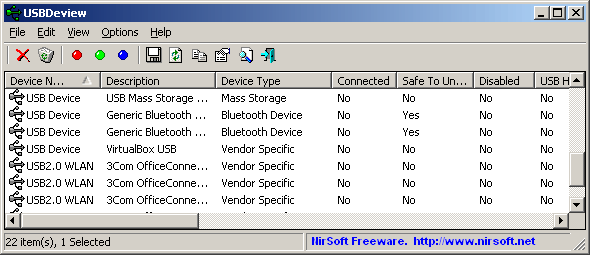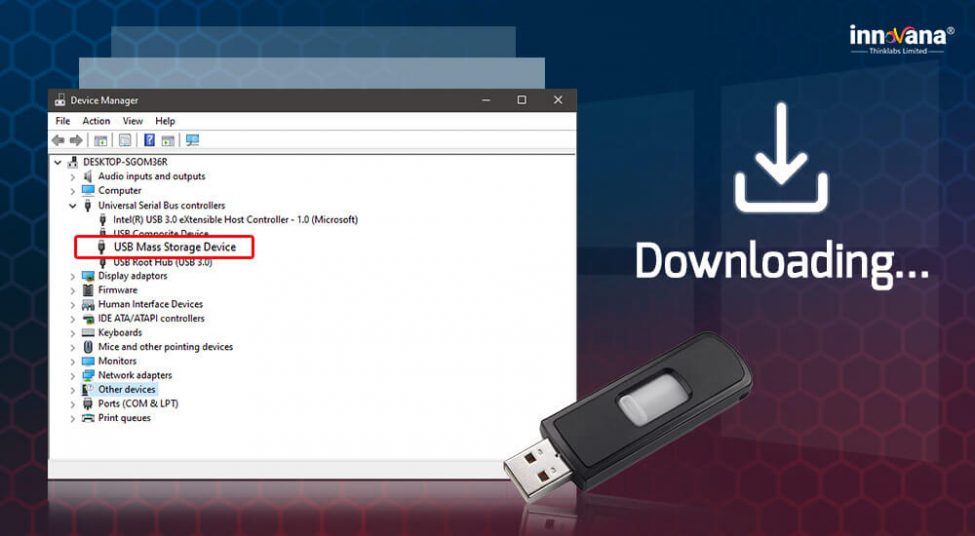

- #MASS STORAGE DEVICE DRIVER WIN7 SERIAL#
- #MASS STORAGE DEVICE DRIVER WIN7 DRIVERS#
- #MASS STORAGE DEVICE DRIVER WIN7 CODE#
You can install/uninstall the device you see in Device Manager till you're blue in the face! That only installs/uninstalls the function driver. Lower filters connect after the function driver.įyi. "Upper" filters precede the function driver. (The "Device Object" is the function driver). It's also showing you the order in which things are attached. Driver Load Order tool is showing you any filters that may have been attached to Disk or CD/DVDs drivers. That extends driver functionality to support the vendor's specific product need. Their "filter" allows them to become a part of the device driver call. Acronis, Samsung, Intel) may add a driver filter (connecting their own Lego block) to the base driver to help implement driver interface changes needed to support their product. When you open Device manager you're only seeing the device function drivers! You don't see filters unless you know where to look!ģrd party vendors (e.g. The function driver implements the device hardware interface. Each device starts with a single Lego - called the " function driver". Think of driver filters as driver snap-on parts (like connecting Lego blocks).

Rapid mode has little benefit so I am okay with keeping it disabled, What is a process to safely remove RSTe and replace it with RST? The web shows RST (probably what I want) and RSTe (for RAID and problematic).
#MASS STORAGE DEVICE DRIVER WIN7 DRIVERS#
My motherboard would probably benefit from the correct Intel drivers for SATA. I do not see it listed under device manager. However, iaStorF.sys is still present (C:\windows\System32\drivers). When I removed this program, the Intel icon was removed and it no longer shows up in Programs and Features. I have a Z97-WS ASUS motherboard but am not using RAID. Hi I disabled Rapid mode using the Disk Magician ultility, rebooted and USB2/3 worked! Product Version: Samsung RAPID Mode 1.0.1.68 Ĭompany Name: Samsung Electronics Co., Ltd. Product Name: Intel(R) Rapid Storage Technology Filter driverįile Description: Samsung RAPID Mode Disk Filter Driverįile Version: 1.0.1.68 built by: WinDDK Product Name: Microsoft® Windows® Operating Systemįile Description: Intel(R) Rapid Storage Technology Filter driver - 圆4 Product Version: 3.3 build 345 įile Description: Partition Management Driverįile Version. Around the time I cloned my HDD to a SSD the problems started to occur.ĭevice Object: FLASH Drive 3S_USB20 USB Deviceįile Location: c:\windows\system32\drivers This new hardware briefly worked with USB2 and USB3 flash drives. Note that other USB devices work (mouse, keyboard, labeler).
#MASS STORAGE DEVICE DRIVER WIN7 CODE#
I have tried several brands of USB and the all generated a code 10. Then I removed USB3 related programs (WIN7 drivers) and then resinstalled chipset, and USB drivers, and IME. Which results in Win7 replacing them with generic ones.
#MASS STORAGE DEVICE DRIVER WIN7 SERIAL#
My question is whether such a scenario is known to occur in practice, or likely to occur in the near future? Has such a scheme been attempted the past? Will the quantity of dodgy USB mass storage devices out there form an effective shield against the operating system getting fancy?įinally, are there any other standard USB classes or approaches which I might consider as a more reliable alternative? Windows 10 has finally added standard CDC support yet supporting earlier versions would involve bypassing signed driver installation (plus a history of BSODs, random disconnects and enumeration failures has left me wary of virtual serial devices.Thanks for your help. However, this is clearly an abuse of the system and may fall over if Windows decides to, say, detect that the I/O data is being read back inconsistently, to defragment the cluster chain, reformat as exFAT, etc.

Thus far, this has worked surprisingly smoothly, with fast I/O and enumeration through what is presumably well-optimized path on all systems tested and no privilege elevation. All data outside of the hard-wired I/O file sectors is reloaded into RAM at enumeration and ignored. The trick being to report the metadata for a FAT filesystem containing a hidden device I/O file, which the interface application then employs raw file unbuffered I/O to communicate through. Instead I am evaluating a scheme of impersonating a mass-storage device. HID is straightforward and flexible but has poor throughput aggrevated by MCU-specific limitations. This suggests the use of a standard USB device class. In part, due to the resources required to develop and sign custom drivers, and in part as third party drivers have proved a significant stumbling block for users. I am developing a USB-based peripheral device for use on Windows desktop systems and would prefer to avoid a driver installation step.


 0 kommentar(er)
0 kommentar(er)
